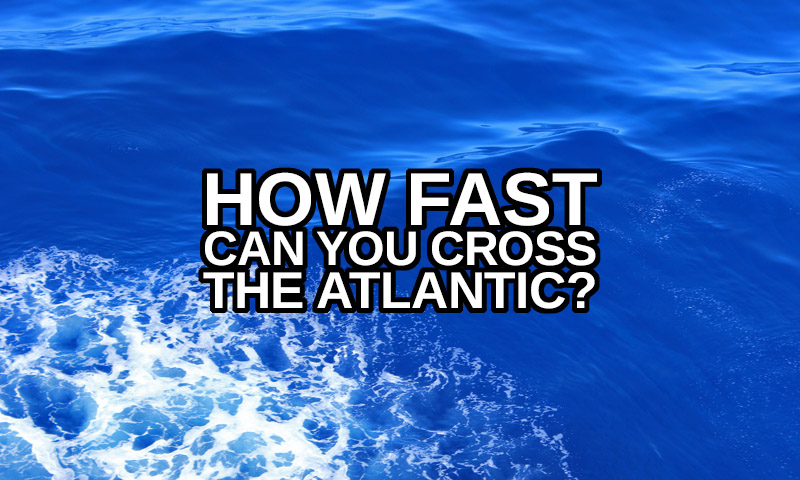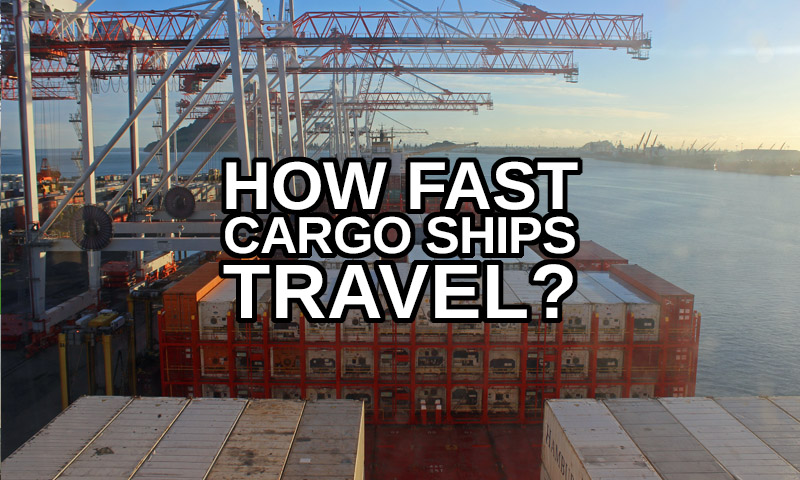How long does it take to sail the Atlantic Ocean? This article provides insights about the duration of a transatlantic sailing journey.
The Atlantic Ocean, the second largest ocean in the world. connects Europe and Africa with the Americas. It spans a distance of approximately 1,800-3,000 miles (2,900-4,800 kilometers) in between. In addition to flying, crossing the Atlantic on a boat is also an option.
How long does it take to sail across the Atlantic?
There is no straightforward answer to that question. Various factors, such as the type of vessel, prevailing winds, chosen route, and other variables, influence the duration of the journey. This article explores the average time frames for different routes.
This article is divided into two sections. The first section focuses on the duration of the voyage from East to West, while the second section discusses sail times from the Americas to the Old World.
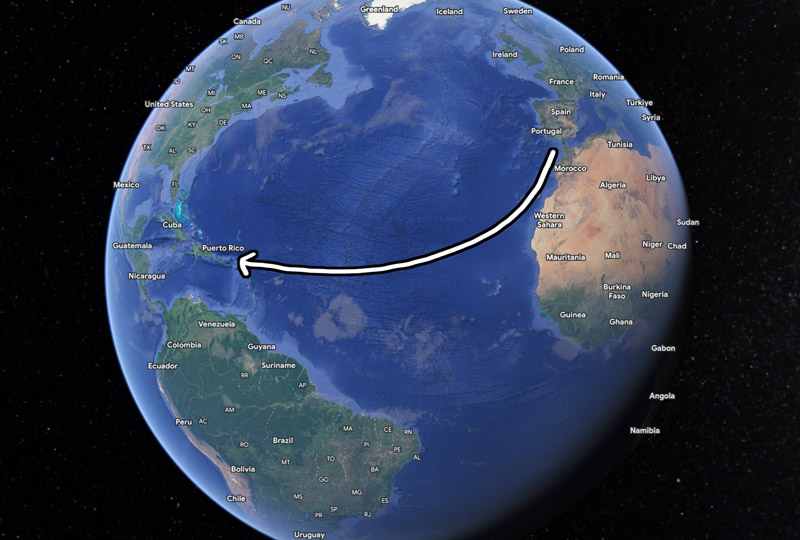
How Long Does It Take to Sail the Atlantic from East to West?
Why is crossing the Atlantic from East to West more common?
Crossing the Atlantic from westward is more popular due to the presence of trade winds. Trade winds, also known as easterlies, are prevailing winds that blow east to west near the equator. In contrast, prevailing winds in the middle latitudes blow in opposite directions.
Sailing from east to west allows one to benefit from the warmth of the equator region. Going the other way around with the wind on your side requires traversing colder areas.
What are the most popular sailing routes from east to west?
The most popular transatlantic sailing route begins in the Canary Islands and ends in the Caribbean. While the direct route is the fastest, it is common to sail to a waypoint in the southwest first to take advantage of more stable winds before heading directly westward.
Although less common, it is also possible to sail from Africa to South America. In most examples, these ships depart from South Africa and travel to Brazil via St Helena.
How long does it take to cross the Atlantic westward?
When taking the most popular route from the Canary Islands to the Caribbean, it typically takes around 3-4 weeks to sail across the Atlantic. The more southern route from South Africa to Brazil via St Helena also takes approximately one month.
The actual voyage times vary greatly depending on the conditions, the type of the vessel, and many other factors. The world record for sailing from Europe to the Caribbean (Spain to Bahamas) is 6 days and 14 hours.
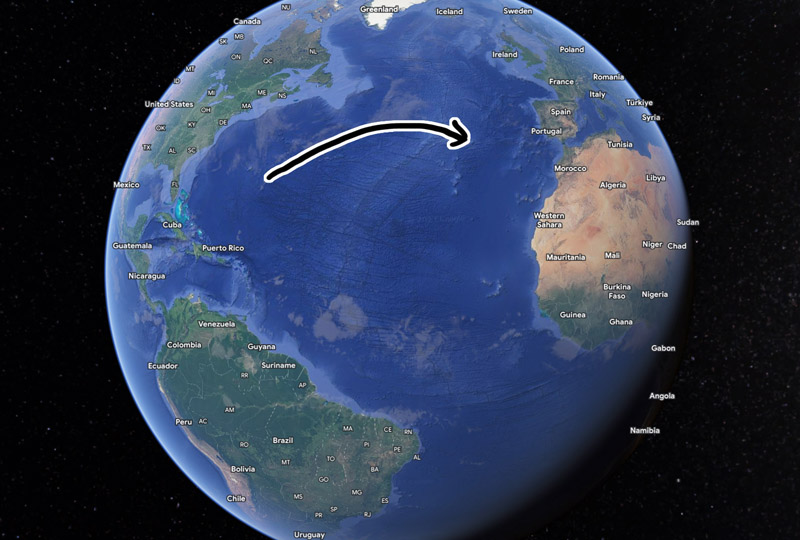
How Long Does It Take to Sail Across the Atlantic from West to East?
What routes are common when crossing the Atlantic eastward?
Crossing the Atlantic from the west to the east usually follows a relatively straightforward route from The Canary Islands or the Mediterranean to the Caribbean. However, traveling in the opposite direction requires pushing against the constant trade winds.
To take advantage of the favorable winds, sailors need to travel further north.
The most popular eastward sailing route across the Atlantic heads towards the Azores, an island group owned by Portugal. It is very common to make a stop in Bermuda along the way.
Can I sail from South Africa to America through the South Atlantic?
While less common, it is possible to sail from South Africa to America by taking a more southern route. By heading much further south, sailors can utilize prevailing winds. However, the South Atlantic and the Southern Ocean around Antarctica are known for turbulent seas.
Certain adventure travel companies do offer this route. One such voyage starts from South America, visits the northern tip of Antarctica, and continues to South Africa via Georgia Island and Tristan da Cunha.
How long does it take to cross the Atlantic on a boat from west to east?
When sailing the most common route from the Caribbean to Europe, the journey typically takes around 3-4 weeks. Despite the different routes, the duration is comparable to the westward journey.
However, if departing from the east coast of the United States, it is possible to cross the ocean much faster. The record time for an Atlantic crossing from New York to England is as little as 3 days and 15 hours! That is 3 days less than the sailing record for a westward crossing.
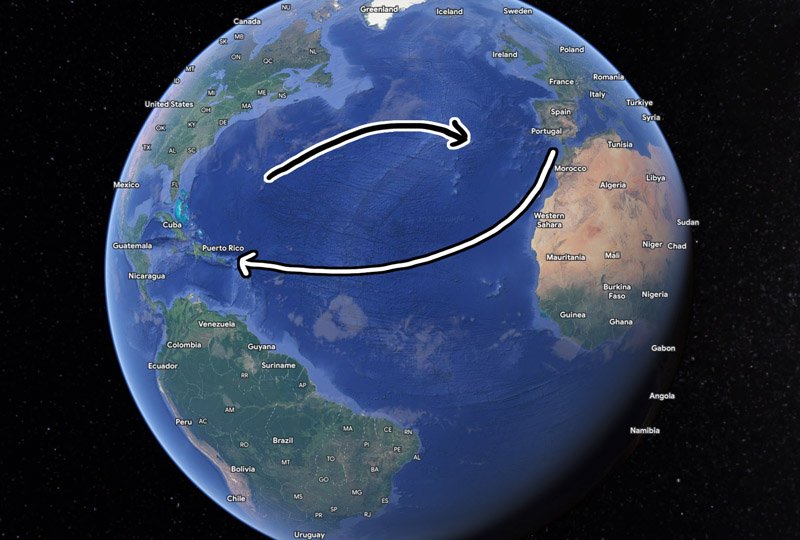
How Long Does It Take to Cross the Atlantic on a Boat?
To summarize, a typical transatlantic sailing voyage takes approximately 3-4 weeks. However, several factors influence the duration of the journey. With a fast boat and favorable conditions, the journey can completed in around two weeks.
While record holders have sailed across the Atlantic in a matter of days, such achievements are exceptional and not to be expected during ordinary crossings.
This article primarily focuses on the average durations for different transatlantic sailing routes. To keep things focused, I’ve omitted details about the best time periods for such crossings. For more information, numerous guides about sailing across the Atlantic Ocean are available online.
If you’re interested in the history of transatlantic travel, I recommend reading my article titled “How Long Did It Take Columbus to Cross the Atlantic?“.

More Guides for Overseas Travel
This website, Arimo Travels, is a sustainable travel site that I established during my own mostly flightless 2-year trip around the world. The website covers flightless travel in general, with particular emphasis on freighter travel.
Although I haven’t sailed across the Atlantic myself, I have traveled from New Zealand to the United States on a cargo ship.
If you’re interested in alternative ways of flightless travel beyond sailing, feel free to explore these two guides I have previously written on crossing the Atlantic without flying:


